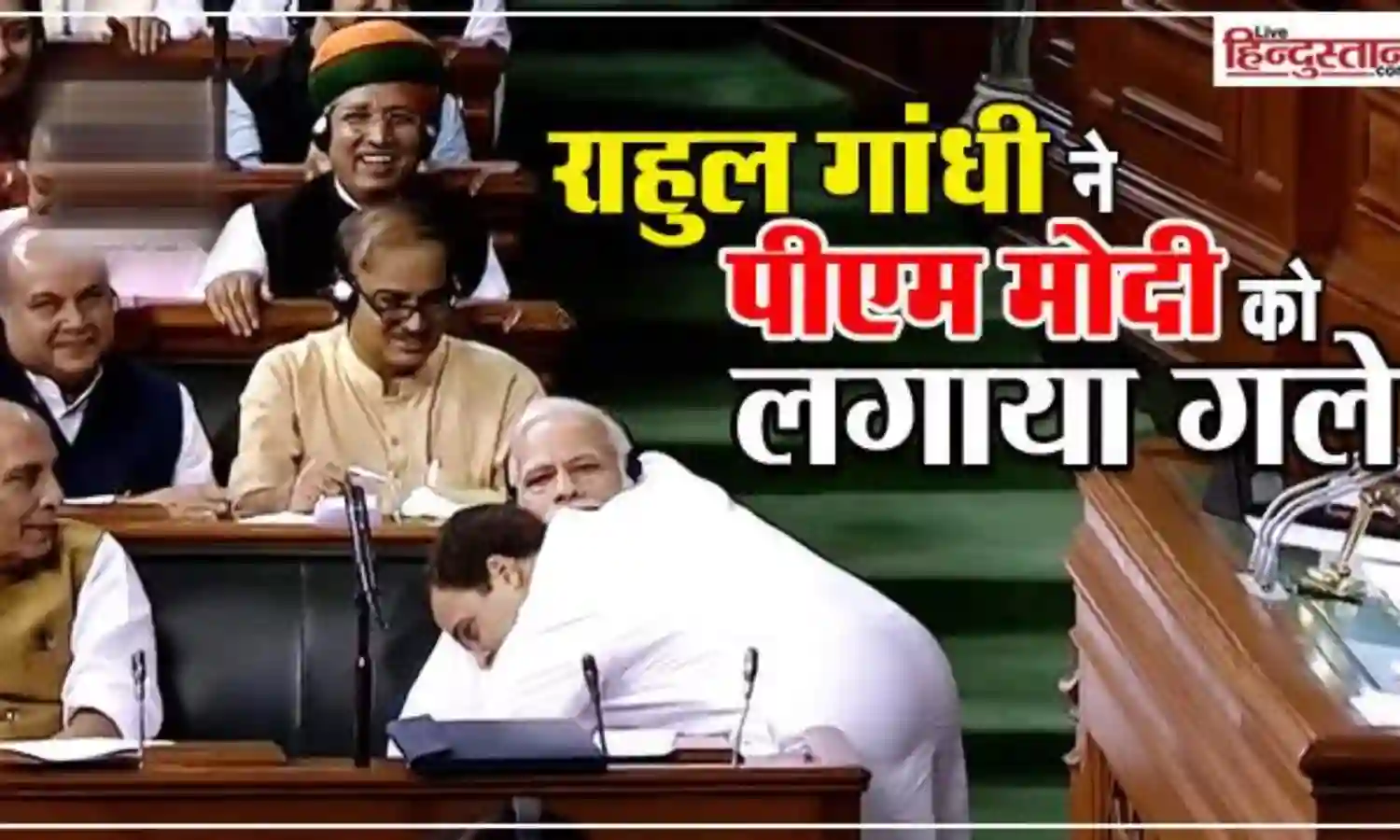It Is Better to Hug Than Cause Havoc
A hug that carries a deeper message than words

NEW DELHI: Rahul Gandhi going up to Prime Minister Narendra Modi and hugging him after his speech in the Lok Sabha no-confidence motion was an affirmation of confidence in love. His speech was sharp, critical and caused some tremor in the treasury benches. The hug was a clear manifestation of an approach or a method of opposition free from ill will and acrimony against the opponent.
The Congress president made the point that an opponent need not be an enemy and opposition can be intense and not intimidatory. The hug stressed the point often made by great personalities in history that a fight can be devoid of rancour and bitterness and can be carried forward to its logical conclusion without causing violence either in thought or deed. It can be based on good will and good gesture without losing its effectiveness and engaging content.
All over media and social media the hug of Rahul Gandhi became prominent in terms of its visual impact and victorious message. Some agreed with the hug and some were not humoured by it.
For whatever its worth, it has become central to the no confidence debate and vote in terms of the optics which may have violated unwritten rules of decorum. As some media person commented “the treasury benches had the number, the opposition had the narrative”. And the hug of Rahul Gandhi gave the narrative an inclusive content and a much needed intent for engagement without necessarily defining anyone as an enemy.
The spontaneous hug outwitted PM Modi himself known for hugging world leaders. Has the hug hoisted the triumph of good will over ill, or is the hug just another hashtag in Indian politics, or has it indeed opened the avenues for rapprochement in the age of spiralling hatred and mob lynching?
Whether the hug is hailed or the hug is howled at, it is irresistible in terms of its visual impact. A hug received in hushed silence honours the one who came forward with open arms to embrace one who has been advocating a Congress Mukt Bharat. Whatever it may be, the hug became the symbol of the debate, drawing the stark comparison between a politics of hate and havoc, and of peace and unity.
A few days before the no confidence motion was taken up in Lok Sabha the ruling leadership represented by none other than the Defence Minister chillingly invoked pre partition and post partition communal conflagration in the context of Rahul Gandhi meeting Muslim intellectuals. Nirmala Sitharaman said the Congress would be responsible if the country passed through the pain and agony of Hindu - Muslim riots before the 2019 general elections.
It was nothing but a manifestation of hatred and violence flowing from the cultivated ideology of exclusion which sees the Muslims as the “other” and remains opposed to the ideal of inclusion which the hug so splendidly represented.
In fact the passionate affirmation of Rahul Gandhi that he has nothing but love for those who ridiculed him by calling him Pappu and hated him by making all kinds of abominable statements about him was indicative of a winsome approach to change some body’s heart by invoking goodness and goodwill.
His words that he would celebrate the elements of good will in his opponents clearly brought out his nobility which is hardly seen in this age marked by demonic upsurge of hatred and violence.
His hug was in many ways transplanted that approach to action and conveyed a more deeper meaning than the speech he delivered in the Lok Sabha.
A man is known more by his deeds than by his words. What Rahul Gandhi did was fruition of the folk wisdom which teaches “Reject nothing, assimilate everything and transform the poison to be the elixir of life”.
Is it that easy to transform poison to become the elixir of life? Embracing the other is the way forward. Gandhi’s approach in fine tuning the idea of Satyagraha was confluential as it derived inspiration from examples from Hinduism, Christianity and Islam. We need such anl approach to stem the counter ideology based on a compartmentalised approach which narrows vision and breeds violence.
In his book “Identity and Violence” Professor Amartya Sen expounds the idea that when one identity of individual is privileged over other identities it distorts the multiple identities of the individual and leads to violence and bloodshed. It can be addressed by balancing the identities. In other words a confluential approach is a critical necessity to harmoniously construct multiple identities which define the individual. Reducing that multiple identity to a one dimensional identity is a negation of confluential approach.
In hugging the Prime Minister Rahul Gandhi was displaying that confluemtial approach which stresses on embracing the opponent and celebrating the folk wisdom “Reject nothing, assimilate every thing and transform the poison to be the elixir of life”.
(S.N.Sahu was former Officer on Special Duty and Press Secretary to President of India late K.R.Narayanan).



